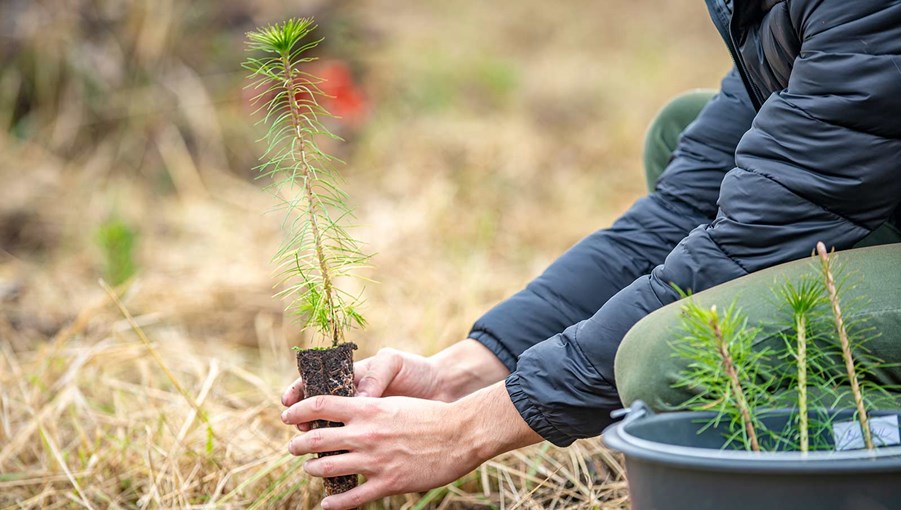
How does forestry work in Sweden?
The dominating silvicultural system in Swedish forests today is even-aged management with clearcuts and tree retention, consisting of final felling, regeneration, and silvicultural measures in a cycle lasting 60 to 120 years. The further north you go, the longer the cycle will be since the trees grow more slowly further north.
At the time of final felling, most trees in a stand are felled at the same time. On average 11 percent of trees in the area are retained to preserve biotopes for plant and animal life, and to create a varied landscape. In order to maintain biodiversity and increase production of natural forage for wildlife such as deer and moose, it is especially important to leave growing rowan, aspen, sallow, and oak.
After the final felling, the site is regenerated through planting or natural regeneration, or a combination these. As the new plants grow into young trees, the stand is thinned to create good growing conditions for the remaining trees.
What legislation regulates forestry in Sweden?
The Swedish Forestry Act regulates Swedish forest management. Until 1993, the primary aim of the act was to ensure sustainable timber production. The strong focus on wood production was partly at the expense of biodiversity. Today’s Forestry Act balances several values including wood production, biodiversity, and other common interests such as recreational and esthetical values.
The Swedish Forestry Act applies to all types of forest owners, private and public.
Swedish forest management is also regulated by certain stipulations contained in the Swedish Environmental Code.
Are there any self-imposed standards that affect forest management?
Beyond legislation, the most important self-imposed standards that affect Swedish forestry operations are those of the certification systems PEFC (Programme for the Endorsement of Forest Certification) and FSC (Forest Stewardship Council), both of which aim to ensure responsible forest management.
The area of productive forest land in Sweden that is certified according to PEFC and/or FSC was 14.9 million hectares in 2019. This corresponds to 63 percent of the total area of productive forest land in Sweden and represents an increase of 130,000 hectares compared to 2018.
You can read more about the certification systems at www.pefc.org and www.fsc.org.
Why is the forest management debate so intense right now?
Sweden and the EU currently face important political decisions that will come to affect forests and forestry. Many different stakeholders are involved, beyond merely the forest industry and forest owners. This has led to an intensified debate involving environmental NGOs, as well as other organisations, and resulted in extensive media coverage. The debate is about the natural values of the forest, the role forests and forest management play when it comes to climate change and climate mitigation, and about its recreational and esthetical values.
Since there are many different thoughts and views on how to make the best use of forests, it is important to listen to all stakeholders on equal terms and understand what the source of the information is.
